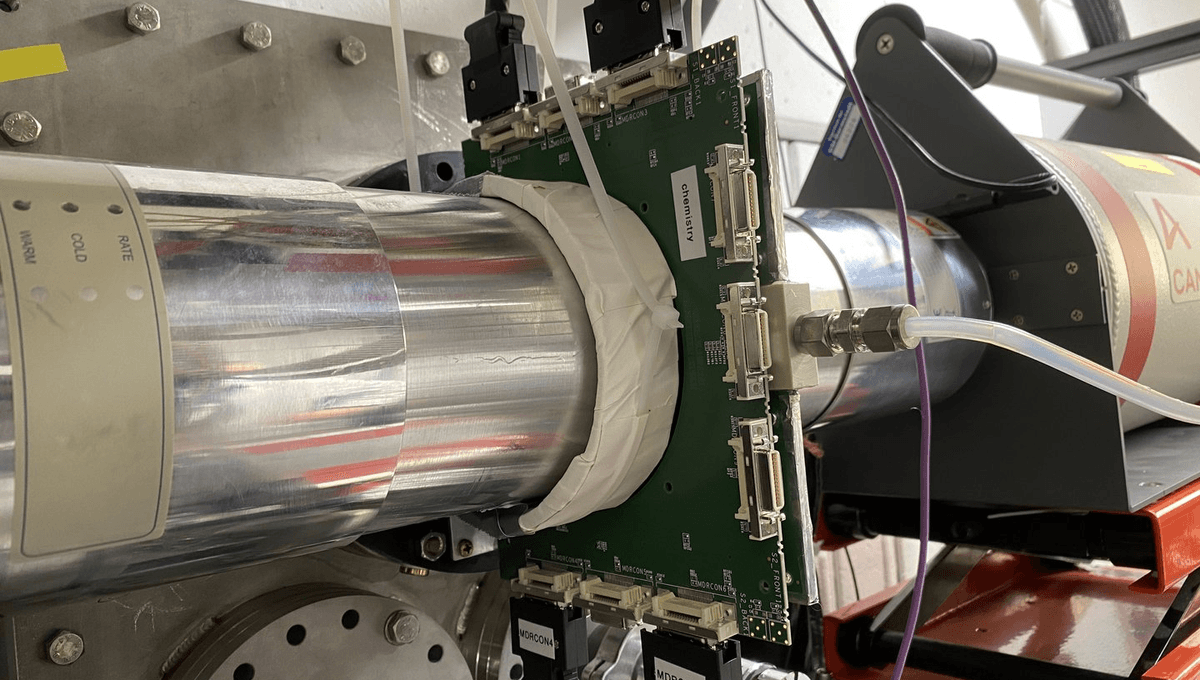
The chemical properties of two of the heaviest synthetic elements, moscovium and nihonium, have been established for the first time. Moscovium is now the heaviest element whose chemical properties we know something about. Both elements have been shown to be modestly reactive, but making any useful compounds still runs up against their incredibly short half-lives.
The nuclear age brought with it the capacity to make trans-uranic elements, those filling spots beyond uranium on the periodic table. Although these elements are almost certainly forged in supernova and kilonova explosions along with more familiar heavy elements, their half-lives are so short that none survive on Earth from these events.
Some of the early trans-uranic discoveries turned out to survive long enough to be studied in depth, and even have applications, such as in the case of plutonium and americium. However, as the nuclei got heavier, the half-lives tended to get shorter (although this correlation is not perfect).
Moscovium’s longest-lived isotope has a half-life of less than a second, so you have to make a lot of it to have enough left to study for an experiment lasting even a minute. Nihonium-286 lasts a relatively stately 9.5 seconds, but there is still no time to waste.
Consequently, we know very little about how the most recent discoveries interact with other elements.
Nevertheless, chemists love a challenge, and a team from the Helmholtz Association of German Research Centres has now assessed the reactivity of elements 113 (nihonium) and 115 (moscovium), having done so for 114 (flerovium) previously.
The behavior of these elements is particularly interesting because such massive nuclei accelerate the electrons, circling them to significant fractions of the speed of light. For lead and some heavier elements, this means the outer electrons’ behavior can no longer be modeled purely by classical mechanics, and instead, the behavior predicted by the special theory of relativity must be taken into account.
The periodic table exists because, long before chemists were aware of electrons, they noticed patterns in the chemistry of elements and placed them in the same columns. Consequently, one can usually predict an element’s chemical behavior by looking at those above it on the table.
However, flerovium, which sits directly below lead on the table, doesn’t entirely fit. It’s less chemically reactive than lead, is thought to melt below room temperature, and turns into a gas quite easily as well – considering how toxic lead is, we can be grateful it doesn’t behave like its downstairs neighbor.
Despite the differences between flerovium and lead, the researchers found that when looked at in the context of their neighbors, commonalities emerge. Nihonium and moscovium both turn out to be more reactive than flerovium in the newly published work, just as thallium and bismuth are for lead. Indeed, at the bottom level of the periodic table (so far), the extra reactivity is possibly even more extreme.
To perform the experiment, the team fired beams of calcium-48 ions at sheets of americium-243 to combine them and form moscovium-288, which briefly becomes nihonium-284 when it undergoes alpha decay.
The products were too scarce and short-lived to test using traditional chemistry, so instead an inert gas was used to carry them over a quartz detector, allowing the team to measure if they bonded to it. Once the atoms decayed to roentgenium and further down the chain, the team could observe these atoms’ binding behavior as well, but these are already much better understood.
“We have succeeded in increasing the efficiency and reducing the time required for the chemical separation to such an extent that we were able to observe the very short-lived moscovium-288, and, at an even larger rate of about two detected atoms every week, its daughter nihonium-284,” said first author Dr Alexander Yakushev in a statement.
Yes, you read that right, it took seven weeks to detect the bonding behavior of 14 nihonium atoms, and just four moscovium atoms in the same time. It’s not much of a sample size, but the fact that not all the atoms bonded strongly enough to the quartz to stick, instead reaching a downstream gold detector, confirmed both elements are less reactive than their counterparts above them on the table.
The authors conclude that an enhanced version of lead’s relativistic effect causes flerovium to behave almost like a noble gas, barely bonding with other elements. Although most intense at flerovium, enough of this local effect spills over to nihonium and moscovium to make them only modestly reactive. Copernicium (element 112) has previously been shown to also be less reactive than either of the elements studied in this experiment.
If they lasted longer, flerovium atoms might be useful for replacing lead in products like batteries. As it is, it’s hard to imagine any practical device made with any of these elements, but understanding their chemistry may help us find applications for longer-lasting elements.
The study is published in Frontiers in Chemistry.
Source Link: Superheavy Elements Moscovium And Nihonium’s Chemical Properties Finally Revealed